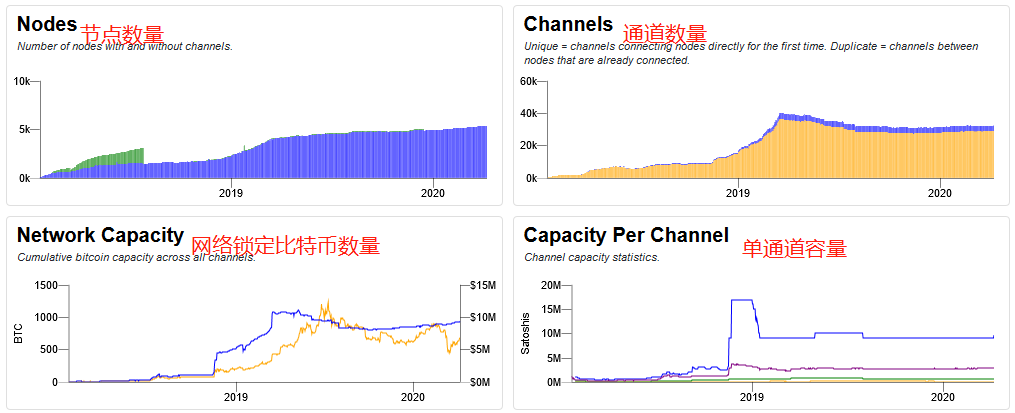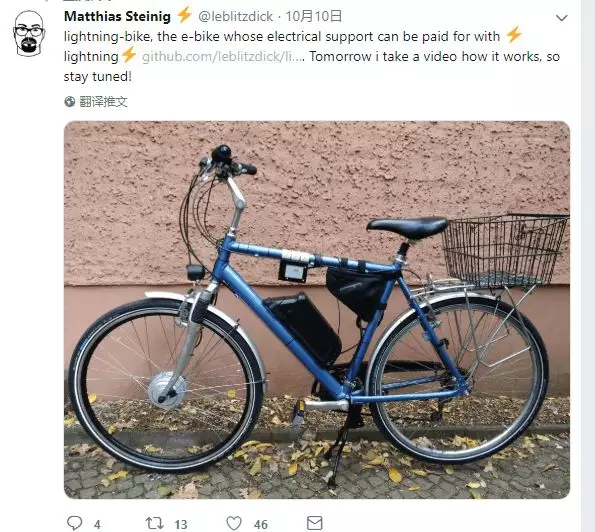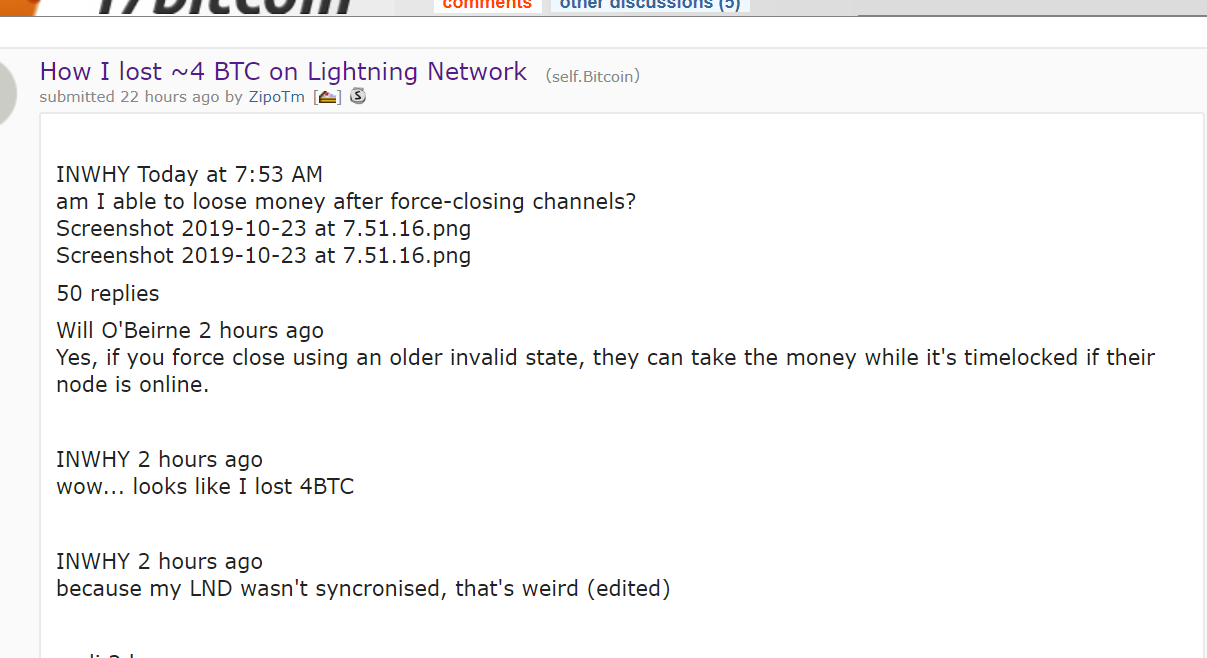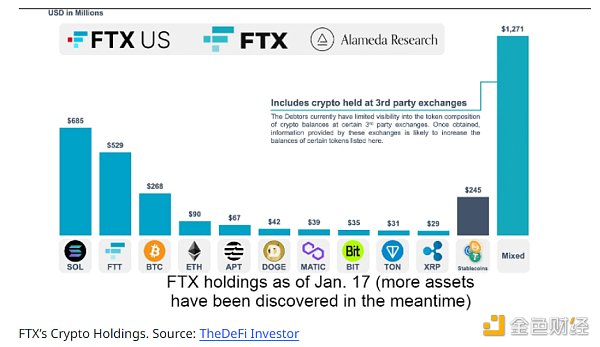The number of BTC in the lightning network hit a new high of 9 months, and the throughput is faster than Alipay. Will it completely solve the bull market congestion?
7 transactions per second, the transfer confirmation time is 1 hour, and a transfer fee of 360 US dollars is the "network performance" of Bitcoin.
Compared to Alipay ’s 250,000 transactions per second and zero handling fees, Bitcoin pales in comparison. The high transfer fee and long confirmation time have become the fundamental obstacles to the further expansion of Bitcoin. The Bitcoin network urgently needs a new technology that can completely change the status of payment.
BlockStream-led Segwit + Lightning Network (LN) route has become the ultimate solution to improve the efficiency of the Bitcoin network.
After five years of research and development, can the Lightning Network today become a weapon to avoid congestion? Can the efficiency of the Bitcoin network be greatly improved?
- Blockchain Industry Weekly Report | When production cuts come, opportunities or challenges?
- Viewpoint: Google search volume for "halving bitcoin" has soared this year. Maybe nothing will happen after the halving?
- Coinbase: DeFi ’s high interest rate will be compressed, and the stabilizing currency bridge function will be more efficient, making DeFi mainstream
1. Status of Lightning Network
The Lightning Network is mainly used for bitcoin micropayments. Under this technical framework, it allows users to send bitcoin's smallest unit Satoshi in real time with zero handling fees. 1 Bitcoin = 100 million Satoshi.
The lightning network consists of channels and nodes. The more bitcoins locked in the channel, the more channels and nodes, the higher the availability of the lightning network. The number of locked bitcoins, the number of channels, and the number of nodes have become one of the key indicators to measure the availability and acceptance of Lightning Network.
These data have performed well in the past.
Bitcoinvisuals data shows that the lightning network channel capacity (the number of Bitcoins in the lightning network) hit a high of the past 9 months on April 8 and reached 936, an increase of 3% in the past 30 days. The price increase is consistent. This data reached the highest level in history in May 2019, and the number of locked Bitcoins was 1050.

However, the real data of Bitcoin locked in the Lightning Network is higher than the current data.
Because some Bitcoin holders do not want to broadcast their nodes to the world, the Lightning Network is divided into public and private. The number of Bitcoins locked by the Lightning Network is completely publicly available, that is, the 936 Bitcoins mentioned However, the total amount of BTC held on the private Lightning Network cannot be found, but the data is not unknown.
Previously, the Big B Network Research Institute conducted a study on the lightning network's bitcoin holdings. The research showed that 88% of BTC on the lightning network is stored on the public network. Based on this information, the current number of BTC on the entire Lightning Network (including private networks) is about 1043.

At the same time, the number of Lightning Network nodes and channels is also increasing, and most nodes are distributed in Europe and the United States.
TokenInsight research shows that Lightning Network's network capacity and number of channels are steadily increasing. Between January 2019 and February 2020, Lightning Node grew rapidly at 105%. On January 7, 2019, there were 2,493 nodes with lightning channels. By February 10, 2020, the number of nodes will increase to 5,112. At the same time, these nodes are distributed all over the world, of which Europe and North America account for more than 90% of all identifiable network nodes.
The current number of Bitcoin Lightning Network nodes is 12,131, an increase of 4.36% in the past 30 days, and the number of channels is 36,333, an increase of 1.4% in the past 30 days.
The increasing number of nodes, channels and bitcoin lockouts intuitively illustrates the speed of the lightning network's landing Into users?
2. Can Lightning Network really solve congestion?
The blockchain is responsible for all transfers of the Bitcoin network. Since the block size is fixed at 1M, the limit of transfers per unit time is limited to 7 transactions / second.
The design of Lightning Network is to increase the number of transfers per unit of time. The working idea is that a large number of small transfers are made through the Lightning Network without occupying the capacity of the main chain to solve the main chain congestion. So, has the Lightning Network achieved its goal? I believe that many applications based on Lightning Network can answer this question.
At present, Lightning Network transfer function has been opened on the small B network exchange, Bitpie, Cobo wallet, etc.
According to the official website of Xiao B website, the lightning network of the platform has been upgraded. Before the upgrade, the maximum payment amount was 0.04 BTC, which has now been expanded to 0.5 BTC. The payment channel also increased from the highest 0.167 BTC to 2 BTC.
In response to the availability of the Lightning Network, Weibo users Haobi said that in March last year, they charged 500 yuan worth of BTC to the Lightning Network account, paid 60 yuan in monthly bills with wallets, and sent dozens of rewards. Now there is still 485 yuan left. Feeling inexhaustible.
In addition, engineers have developed some practical gizmos with the help of the Lightning Network.
In October 2018, engineer Matthias Steinig tweeted,
"This electric vehicle (Lightning-Bike) can be rented through the Lightning Network."
According to reports, under the control of a server, the electric bicycle is authorized through the lightning network payment to unlock the battery of the bicycle. Display screen and wireless signal receiver to provide data and network support for Bitcoin payment.

After that, the engineer released a video of the operation, which showed that using the electric car cost 250 satoshis per minute (the smallest unit of Bitcoin, 0.00000001 BTC, currently 250 satoshis less than 2 cents). After the payment is completed, you can drive the electric bicycle. After the payment time is over, the system will automatically turn off the power, but the bicycle can still ride normally. Although Steinig's invention has not been widely used, it also confirms the feasibility of Lightning Network micropayments.
In January of this year, Blockstream Chief Strategy Officer Samson Mow tweeted that the theoretical throughput of the Lightning Network exceeded any new generation of blockchain, and even exceeded payment systems such as Visa or Alipay. The Lightning Network has reached an inflection point, decentralized The system can outperform the centralized system.
According to Samson Mow, once the performance of the Lightning Network surpasses Alipay, it means that the transfer rate of Bitcoin will reach 250,000 transactions per second from the current 7 transactions per second.
If this is the case, solving network congestion is as easy as it gets.
In addition, the current usage of Lightning Network merchants is also increasing. Bitcoin.com boss Roger Ver and Litecoin founder Li Qiwei's previous gamble best proves this conclusion.
At the Blockchain Cruise Summit in October 2018, BCH main supporter Roger Ver and Litecoin founder Li Qiwei made a bet on whether there will be 1,000 merchants accepting the Bitcoin Lightning Network by the end of 2019 (Ver believes that this cannot be achieved A goal). In a recent video, Ver claimed that he "obviously won", and according to the gamble, Li Qiwei must wear a Bcash T-shirt and admit it wrong. Ver came to this conclusion based on data from lightningnetworkstores.com and acceptlightning.com. These two websites show that less than 350 merchants accept LN.
However, before Li Qiwei responded, cryptocurrency payment company CoinGate tweeted to confirm that in the past 18 months, more than 9,000 merchants on the CoinGate platform had accepted LN, and Li Qiwei had already won this bet .
The gambling contract also shows that the confrontation between BTC and BCH has deepened into the bone marrow.
And what the Lightning Network means to Bitcoin, cryptocurrency venture investor Tim Draper's argument may be representative. Tim Draper said that innovations such as the Lightning Network will be the key to driving Bitcoin's price rise, because payment processors make transactions easier. By 2022 or 2023, the value of BTC will reach 250,000 USD.
However, everything has its two sides, and the Lightning Network has encountered many problems during its continuous development.
3. The much-criticized Lightning Network
In October 2019, Reddit user ZipoTm posted a post titled "How did I lose 4 BTC on the Lightning Network", saying that it lost 4 BTC due to forcibly closing the Lightning Channel using the old invalid state.
ZipoTm said: "If you force the old invalid state to be closed, if the Lightning Network node is online at this time, they can take the money within the lock-up time." The implication is that Lightning Network users cannot force when the node is online. Close the invalid channel, if you do so, you may lose bitcoin.
Although ZipoTm retrieved most of the "lost" bitcoin a few months later, this kind of "people sitting at home, blame from heaven" coin loss incident is still too scary for ordinary investors.

In addition, the Lightning Network has also been criticized as having security problems.
In February this year, Christian Decker, a researcher at Blockstream, and four researchers from the Department of Computer Science at the University of Vienna wrote a research paper. The paper pointed out that the Lightning Network uses gossip and detection mechanisms to run nodes. Data, and accordingly propose two attack methods: detection attack and timing attack.
The research papers of several researchers have shown that as long as "the balance of only one channel is lower than or equal to the second-lowest balance from the attacking node", you can track the Bitcoin payment from the attacked node to which node.
In short, several researchers have found a way to track the payment path of LN Bitcoin.
If the attack methods of several researchers are feasible, then the previously declared "Lightning Network can help Bitcoin achieve anonymity" vision is completely shattered.
At the same time, in February this year, two professors at the Hebrew University, Ayelet Mizrahi and Aviv Zohar, discovered a loophole in the second layer of the Bitcoin Lightning Network's scaling solution. The two professors said that a minimum of 0.25 BTC may cause The payment channel is locked.
In addition, the Lightning Network has also been criticized for its unreasonable economy, logical flaws and loopholes.
In November 2019, researchers from Hungary and the Institute of Computer Science and Control published a research report on the Lightning Network (LN), which also showed that Lightning Network routing is not economically reasonable.
The report pointed out that the simulation results of the researchers indicate that the Lightning Network "is economically unreasonable for most nodes currently connecting the network together."
The simulator used by the researchers only depends on the public data of the LN framework, such as capacity and network structure. The researchers tried to verify these assumptions based on the information provided by the “LN node owner”. The final investigation concluded that the lightning network infrastructure was “economically unreasonable”.
In addition, in March this year, Craig Wright published a blog post "The Property Flaw of Lightning" that believes that any amount of bitcoin purchased on the Lightning Network has not actually reached the legal CDD (Customer Due Diligence) and KYC (Know Your Customer) requirements will cause trouble for Lightning Network operators who receive "stolen" Bitcoin.
In any case, all technical problems will eventually be solved. For the Lightning Network, what is really difficult is the "mass foundation" problem.
As the staff of the Lightning Network node operator "LNBIG" said in an anonymous interview, "The biggest disadvantage of the current Lightning Network is that few users are familiar with this network. Take Bitcoin network users as an example: about 30 to 350,000 transactions, the Lightning Network is only about 1,000. If at least a small number of people who use Bitcoin transfer their transactions to the Lightning Network, they have already made my project profitable. "
We will continue to update Blocking; if you have any questions or suggestions, please contact us!
Was this article helpful?
93 out of 132 found this helpful
Related articles
- Arbitrage in a plunge: Coinbase discovered these 3 unusual methods
- Babbitt column | Why advise ordinary people not to make contracts?
- Mu Changchun, Di Gang: Supply Chain Finance Analysis Based on Blockchain Technology
- Viewpoint: After halving, the Bitcoin network security model may need to be adjusted
- Viewpoint | Why is Ethereum a true representative of open finance?
- Popular Science | Auditable security and approximate activity of Casper FFG
- Is the crypto lending market a time bomb?






